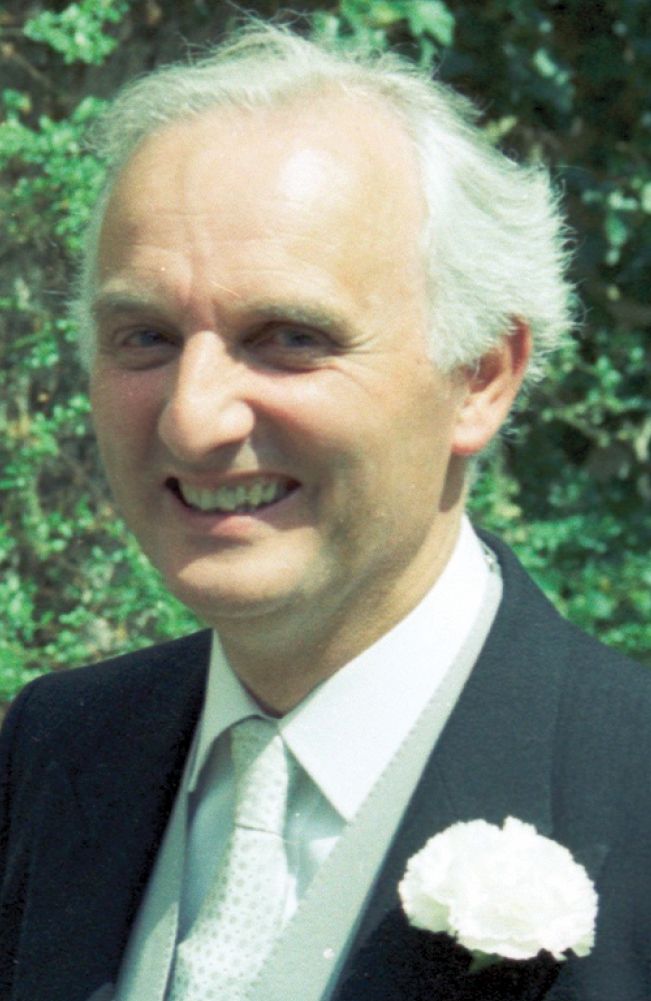John Theodore Houghton
DOI: 10.1063/PT.3.4552
Atmospheric physicist John Theodore Houghton died of complications of COVID-19 on 15 April 2020 following a long illness. He was born on 20 December 1931 in Dyserth in North Wales, not too far from his final retirement home in Tywyn, a village by the sea on the edge of the Snowdonia National Park.

John Theodore Houghton
FRED TAYLOR

Something of a child prodigy, at age 16 John won a scholarship to study physics at Oxford University and went on to be first in his class of 1951. His lecturers included luminaries such as Sydney Chapman and Gordon Dobson; they inspired him to stay on to study for a doctorate with Alan Brewer, who led a small meteorology group in Oxford’s Clarendon Laboratory. There John learned to make delicate IR radiometric measurements in the atmosphere the hard way—on a noisy and uncomfortable Mosquito aircraft left over from World War II.
After some years at the Royal Aircraft Establishment at Farnborough, where he continued his aircraft measurements in lieu of active military service, John returned to Oxford in 1962 to take over the meteorology group when Brewer moved to Toronto. He and Des Smith discussed how superior radiation measurements could be made from the new generation of Earth satellites coming on line. They devised a selective chopper radiometer, which used cells containing carbon dioxide to filter the upwelling flux from the atmosphere and measure its intensity, and they flew a version of it on a high-altitude balloon into the stratosphere.
Lewis Kaplan took a year’s leave from NASA’s Jet Propulsion Laboratory (JPL) to work with John’s group in Oxford. Together, he and John showed that the radiation measurements could be inverted to obtain meteorologically useful vertical temperature profiles. John and Smith then boldly proposed to NASA that it fly their British instrument on one of the US experimental weather satellites and thus extend the capability to the global atmosphere. Nimbus 4, with the instrument on board, launched in April 1970; subsequent Nimbus satellites carried improved versions. The instrument on Nimbus 7, which launched in 1978, added composition measurements, including water vapor and nitrogen oxides, to the temperature profiles.
In developing the space instruments, John had worked with two big government science laboratories, named after Edward Appleton and Ernest Rutherford. Taking leave from the university in 1969 to become director of Appleton, John was instrumental in merging the two labs into the Rutherford Appleton Laboratory, which is today the UK’s lead center for space technology.
Having honed his skills as a manager and motivator, John could not resist an invitation to become director general of the UK Meteorological Office when the position became available in 1983. “I must be mad,” he told me after I returned from a 10-year stint at JPL and prepared to take over his Oxford department. Being leader of the Met Office was not an altogether smooth ride for John. The nadir came in October 1986, when a violent storm hit southern England and caused massive damage and loss of life, with no timely warning from the Met Office. Parliament members called for John’s resignation. The crisis blew over, however, and John went on not only to be an outstanding leader of the office, for which he earned a knighthood, but also to extend its purview in 1990 into longer-term forecasting by establishing the Hadley Centre for Climate Prediction and Research.
The Hadley Centre has become a cornerstone of the work of the Intergovernmental Panel on Climate Change (IPCC). Despite its modest name, it is far more than a panel, with thousands of scientists and others involved in writing, under the auspices of the United Nations, regular reports that assess and warn world governments about the probability and likely impact of climate change. The IPCC was created in 1988, with John as a leading light; he chaired the scientific assessment body and was lead author for several key publications. The job was no sinecure; the agreement of more than 100 diverse national groups had to be secured in the face of powerful opposition from lobby groups. John hated going to the meetings and sometimes came back shattered, but he persevered, driven by his strong religious faith and his conviction that he had a duty to apply his knowledge of climate physics to help the world avert what he saw as potential doom. With corecipient Al Gore, John and several other scientists accepted the 2007 Nobel Peace Prize on behalf of the IPCC.
More about the Authors
Fredric W. Taylor. Clarendon Laboratory, Oxford, UK.
